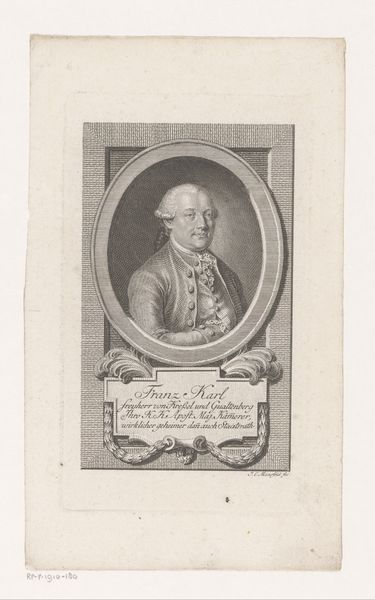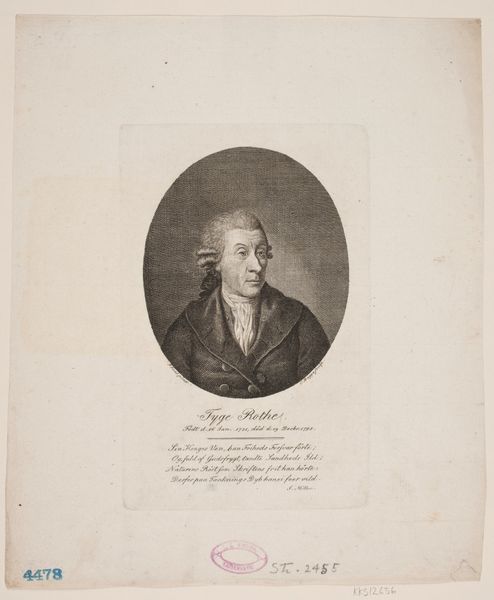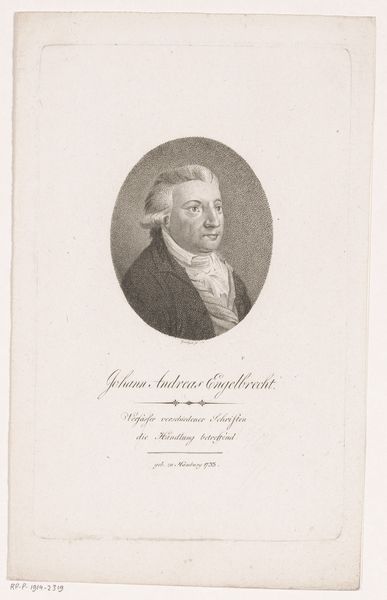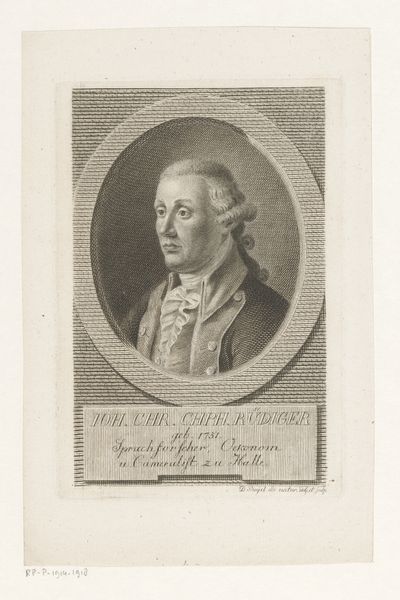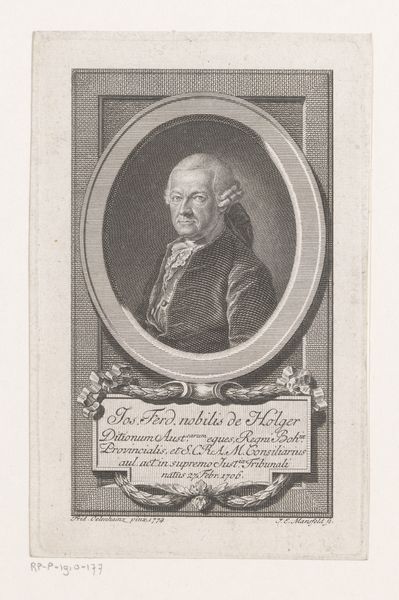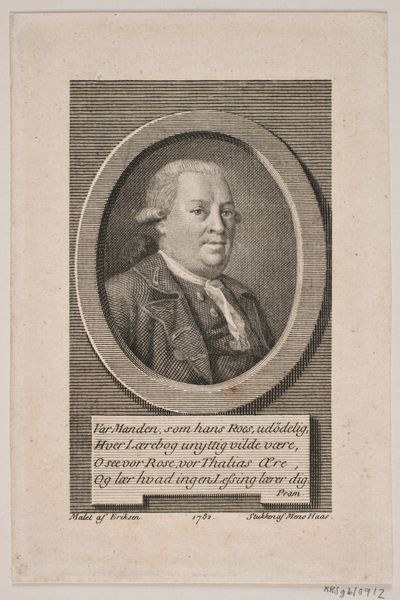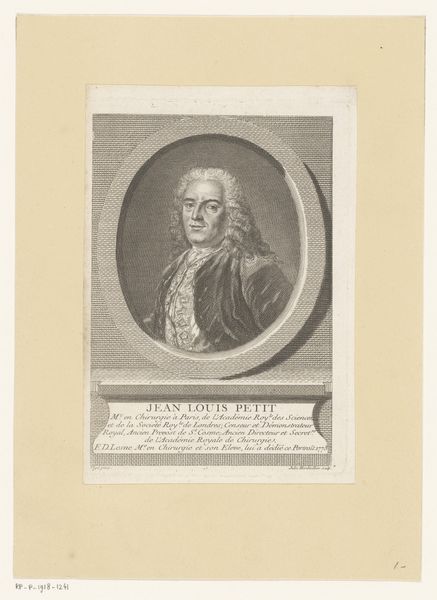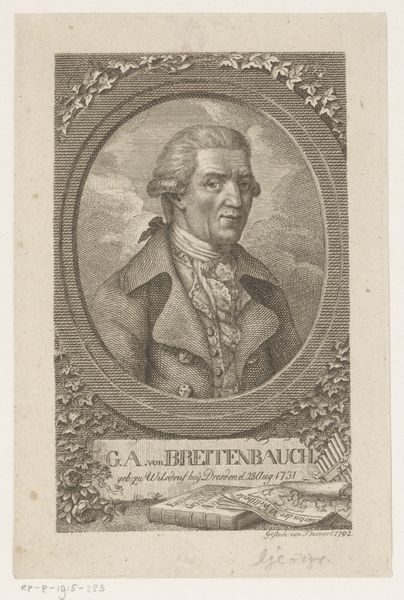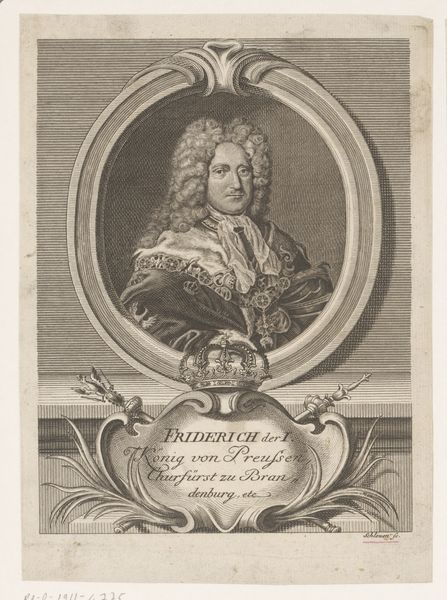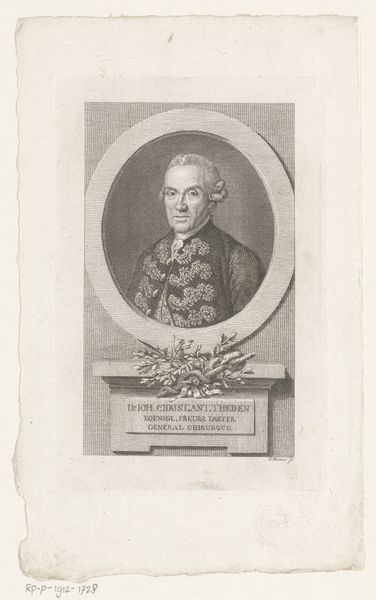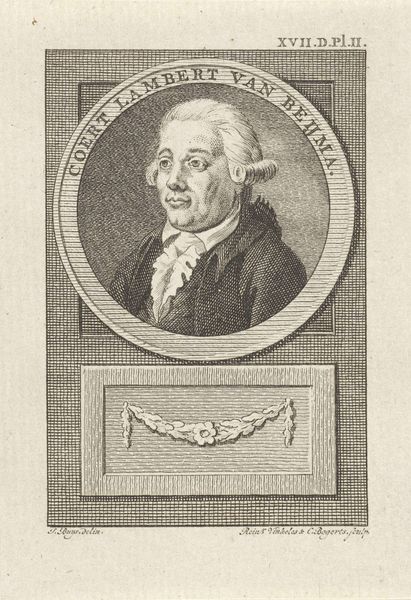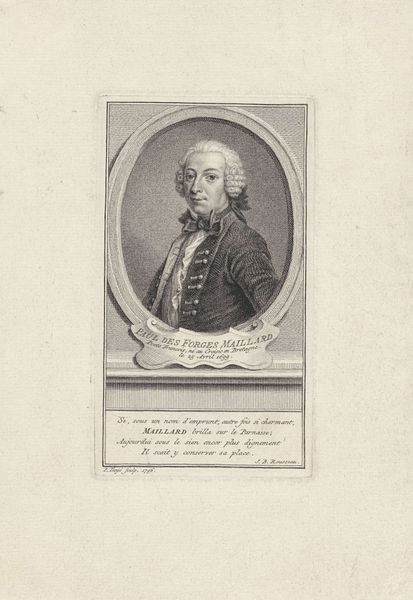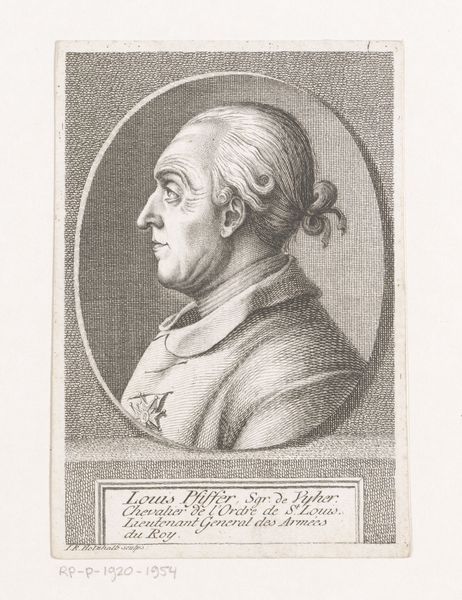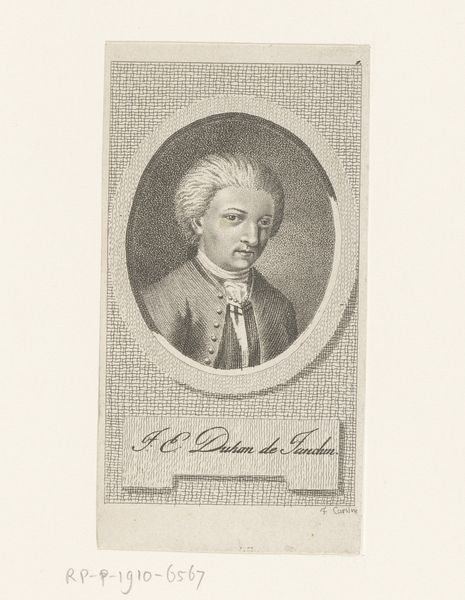
print, engraving
#
portrait
#
neoclacissism
# print
#
old engraving style
#
line
#
history-painting
#
engraving
Dimensions: height 195 mm, width 131 mm
Copyright: Rijks Museum: Open Domain
Curator: Looking at this print, “Portret van Sigmund von Haimhausen,” made sometime between 1773 and 1840, I'm immediately struck by its cool, almost detached air. The stark lines of the engraving contribute to that feeling, wouldn't you agree? Editor: Indeed. There's a formal reserve to it that speaks to the era’s sociopolitical landscape, this stoic image is almost completely devoid of emotion. It prompts me to think about how portraits, especially of elite men like Haimhausen, functioned as statements of power and status. The neoclassical style, evident in its linearity and idealized representation, echoes Enlightenment ideals of reason and order. But at whose expense was this order maintained? Curator: That's precisely the sort of questioning we need. How did Amalie Baader, the artist, engage with and perhaps subtly critique these power structures? The engraving itself, as a medium, carries its own weight. Prints were often used for wide distribution, allowing for a certain level of accessibility, although obviously still limited by literacy and social class. Who was meant to view this, and how might they have perceived it? The careful inscription listing his titles also paints a picture, does it not? Editor: Absolutely. Those details are crucial to understanding Haimhausen’s role within the Bavarian government. His titles tell of his importance and relationship to the reigning leadership. However, these are men represented by the state in very prescribed and political ways. This is the first man from whom taxes and regulation have taken from my body. And the more you realize your proximity to them as a fellow citizen, the clearer they become: just people performing political duty to serve the people in the ways they understand. Curator: So, in essence, while appearing to be a simple portrait, this engraving actually provides a lens through which to examine class, power, and the dissemination of ideology in 18th and 19th century Bavaria. Editor: Precisely. By situating "Portret van Sigmund von Haimhausen" within its historical and social framework, we can begin to unpack the complex web of meanings embedded within it. Curator: And considering it in conversation with contemporary perspectives, it allows us to reflect on the persistent legacies of such structures. Editor: Yes, it's a continuous layering of meanings, really.
Comments
No comments
Be the first to comment and join the conversation on the ultimate creative platform.
